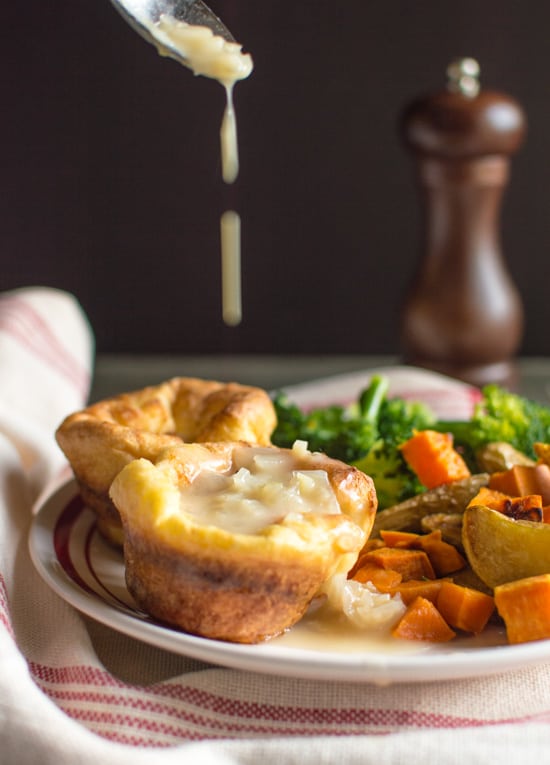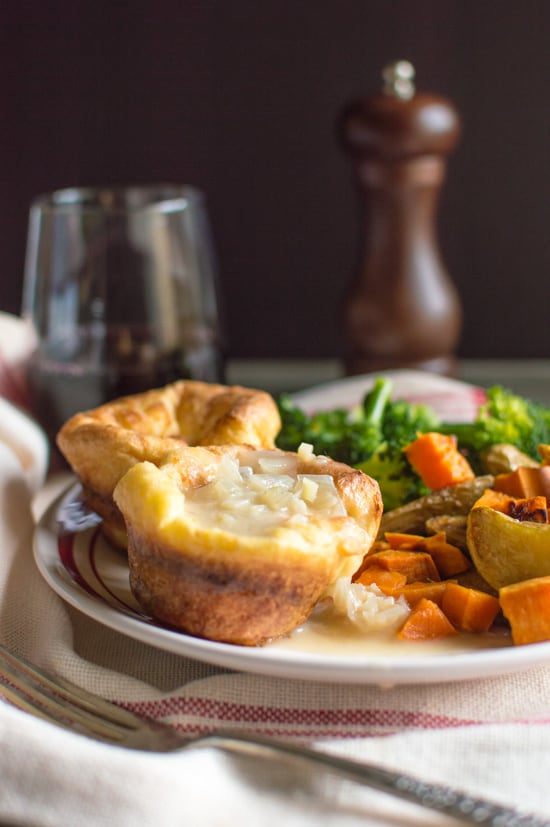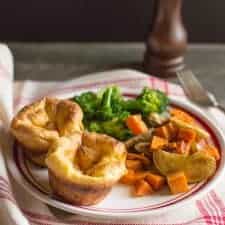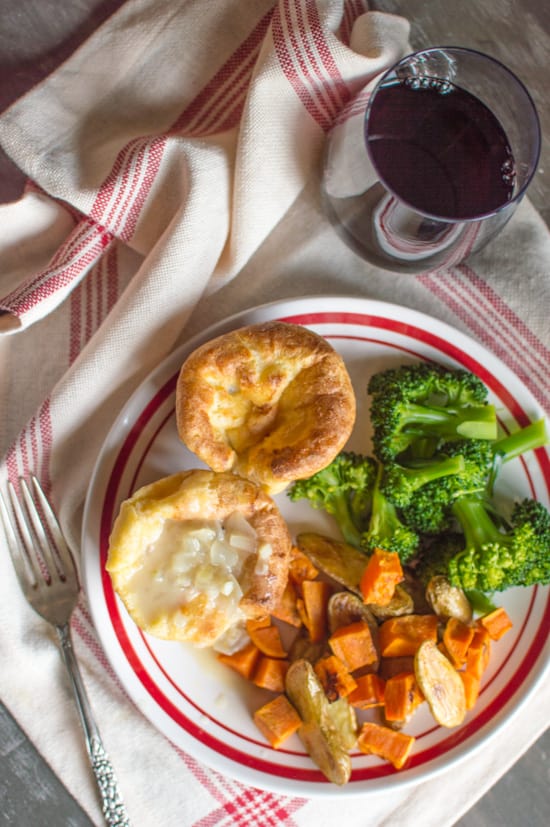What comes to mind when you hear the word, “pudding”? I think of a creamy sweet mixture that I loved as a child. Sometimes it came in little pre-packaged plastic cups from supermarket, sometimes it came from powder in a tiny box. But if we want to talk about bread pudding, I think of warmed sticky bread covered in sugar, best served à la mode. Then, there’s black pudding. Ew. That’s pretty much the only word I can conjure up when I think about it. Never in a million years would I have imagined that a Yorkshire pudding would look like a bread cup—a doughy muffin with a big well down the middle. (I suppose the traditional Yorkshire puddings look more like a massive, often times misshaped, bread bowl.) The first time I ever ate one of these things, I was ready to tear it open like a roll and butter it up. I remember looking around, and everyone else was pouring gravy into it and digging in with a knife and fork. Leave it to the American to look like a pleb at the dinner table. So, what makes a Yorkshire pudding “Yorkshire”? I tried looking for the answer to this question, but no one really knows. I did find out that the first recorded recipe was from 1737, and it was called a “dripping pudding” because the batter was put in a pan underneath some roasting meat. The drippings would fall into the pan to create a pudding! The more you know . . . I served the puddings with a stovetop shallot gravy, but I could imagine eating this with anything. I’ve seen recipes that stuff a salmon creme in the middle and others that are drizzled with chocolate. Guess what I’m going to make next time!



